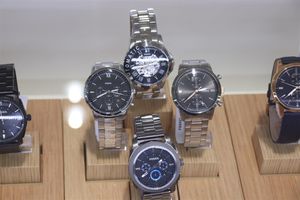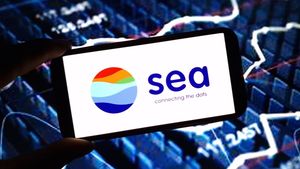Financial News
ESS’ Iron Flow Batteries Selected by Indian Energy and the California Energy Commission to Demonstrate Utility-Scale Resilient Microgrids
ESS’ non-lithium, long-duration energy storage technologies will enable energy resiliency and affordability for Native American Tribes and the Department of Defense
ESS Tech, Inc., (ESS) (NYSE: GWH), a leading manufacturer of long-duration energy storage (LDES) systems for commercial and utility-scale energy storage applications, today announced that it will participate in the Rapid Integration and Commercialization Unit (RICU) at Marine Corps Air Station Miramar. The RICU is a living laboratory for testing how leading LDES technologies can be integrated into utility-scale microgrid applications. The RICU is a venture between Indian Energy, the California Energy Commission (CEC), and the Department of Defense (DOD) to validate LDES technologies. Phase 2 of research at the RICU was funded by the CEC in May 2024 through a $4.85M agreement between the CEC and Indian Energy to demonstrate the diverse capabilities of LDES technologies. The partnership with Indian Energy lays the foundation for deployment on CEC grants and DOD installations.
Indian Energy, LLC is a Native American-owned microgrid developer and integrator with a history of helping Tribes and the Military establish energy independence. High energy costs and unreliable power are common challenges faced by sovereign territories. Microgrids, supported by safe and sustainable LDES, provide much-needed resilience, while also ensuring predictable and affordable energy pricing. Maada’oozh, LLC, a Native American-owned energy and environmental services company, is providing the procurement, logistics, and maintenance services for Indian Energy and has been working closely with ESS to integrate the ESS Battery Energy Storage System (BESS) into the RICU.
“ESS is leading battery storage technology with many different microgrid applications. The RICU will prove that this technology is ready for large-scale deployment on Tribal Nations and Military bases. We are excited about this partnership and look forward to deploying ESS on large-scale energy projects,” said Dr. Craig Reiter, General Manager and Chief Sustainability Officer at Maada’oozh.
“Iron flow technology will provide safe, sustainable long-duration energy storage to Native communities across California and the United States,” said Nicole Reiter, Vice President of Development at Indian Energy. “We are pleased to partner with ESS to deploy this critical technology and ultimately deliver energy sovereignty to Native American communities throughout North America.”
“We are pleased that the California Energy Commission has chosen this project to demonstrate the critical role that long-duration energy storage and iron flow technology will play in delivering energy security to remote communities,” said Eric Dresselhuys, CEO of ESS. “We look forward to working with Indian Energy and Marine Corps Air Station Miramar to deploy this project and continue to build the clean, secure energy future.”
“The CEC is proud to continue its close partnership with Indian Energy and the Marine Corps Air Station Miramar to advance long duration energy storage that can accelerate California's clean energy progress," said Jonah Steinbuck, Director of the R&D Division at CEC. “The Rapid Integration and Commercialization Unit is a uniquely capable facility for validating innovative long duration energy storage technologies and helping build the market confidence needed to scale these resources.”
Over the next six months, project partners will demonstrate optimal use cases in the California energy market including solar peak shifting and grid ancillary services, after which time it will be placed into commercial operation. The RICU testing facility in Miramar, California includes a microgrid connected to a solar array and features multiple connection points for energy storage, providing an ideal platform for this project.
LDES will be critical to achieve California’s ambitious decarbonization goal of 100% zero-emission electricity by 2045. According to a recent California Energy Commission report, LDES resources could grow up to 37 GW by 2045, supporting the integration of intermittent renewable energy and enabling a decarbonized, affordable and reliable grid. ESS iron flow technology is already deployed in California, with projects installed at the Sacramento Municipal Utility District (SMUD) and Burbank Water and Power (BWP), and additional deployments announced and underway both in California and worldwide.
About ESS
ESS Inc. (NYSE: GWH) is the leading manufacturer of long-duration iron flow energy storage solutions. ESS was established in 2011 with a mission to accelerate decarbonization safely and sustainably through longer lasting energy storage. Using easy-to-source iron, salt, and water, ESS iron flow technology enables energy security, reliability and resilience. We build flexible storage solutions that allow our customers to meet increasing energy demand without power disruptions and maximize the value potential of excess renewable energy. For more information visit www.essinc.com.
Forward-Looking Statements
This communication contains certain forward-looking statements regarding ESS and its management team’s expectations, hopes, beliefs, or intentions regarding the future. The words “estimate”, “expect”, “will” and similar expressions may identify forward-looking statements, but the absence of these words does not mean that a statement is not forward-looking. Examples of forward-looking statements include, among others, statements regarding the status of ESS customer relationships and product deployments. These forward-looking statements are based on ESS’ current expectations and beliefs concerning future developments. Many factors could cause actual future events to differ materially from such expectations, including, but not limited to, disruptions, or quality control problems in the Company’s manufacturing operations; as well as those risks and uncertainties set forth in the section entitled “Risk Factors” in the Company’s Quarterly Report on Form 10-Q for the three months ended March 31, 2024, filed with the Securities and Exchange Commission (the “SEC”) on May 8, 2024, and its other filings filed with the SEC. Except as required by law, ESS is not undertaking any obligation to update or revise any forward-looking statements whether as a result of new information, future events or otherwise.
View source version on businesswire.com: https://www.businesswire.com/news/home/20240625835034/en/
Contacts
ESS Contacts:
Investors:
Erik Bylin
Investors@essinc.com
Media:
Morgan Pitts
503.568.0755
morgan.pitts@essinc.com
Maada’oozh Contact:
Dr. Craig Reiter
714-448-7516
csreiter@maadaoozh.com
Indian Energy Contact:
Nicole Reiter
714-473-2878
ncreiter@indianenergy.com
More News
View More




Recent Quotes
View More
Quotes delayed at least 20 minutes.
By accessing this page, you agree to the Privacy Policy and Terms Of Service.



